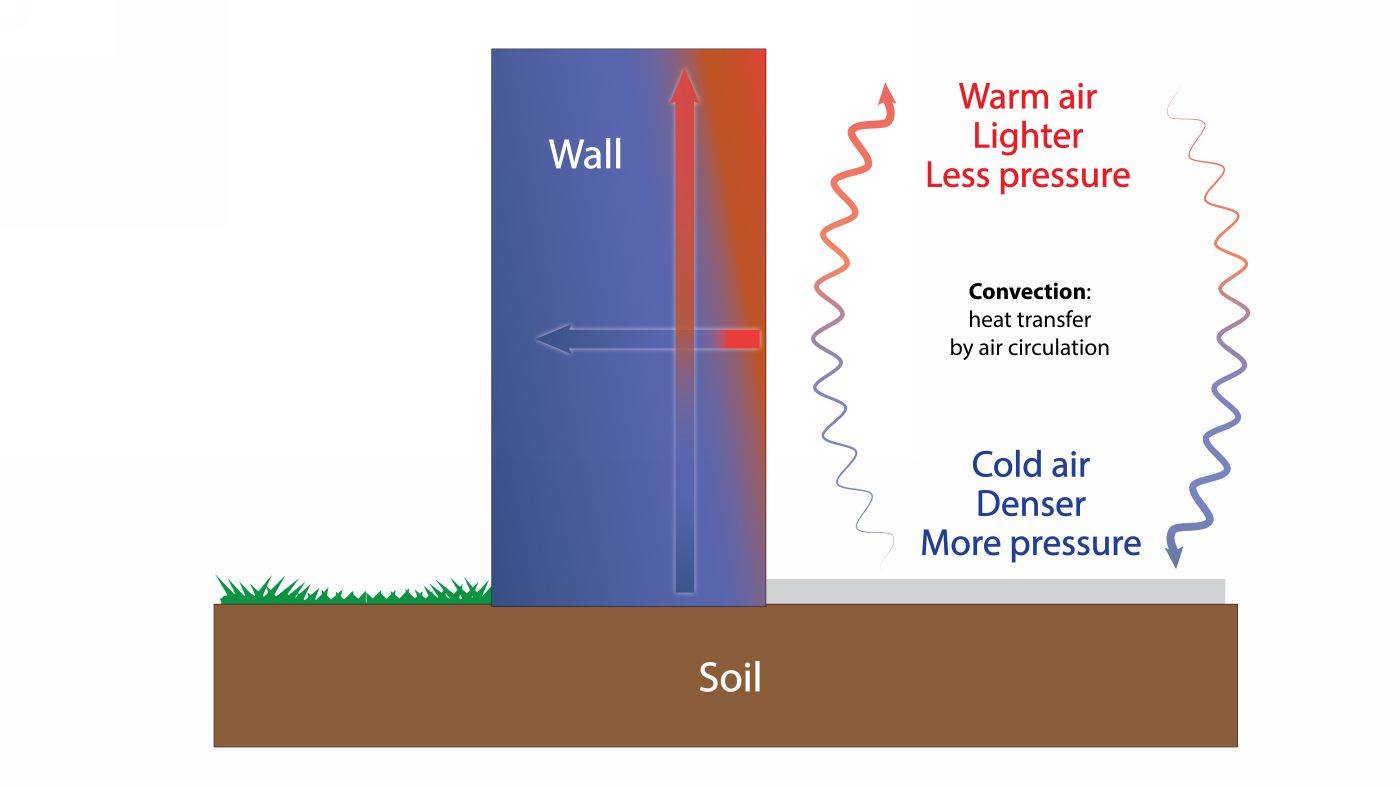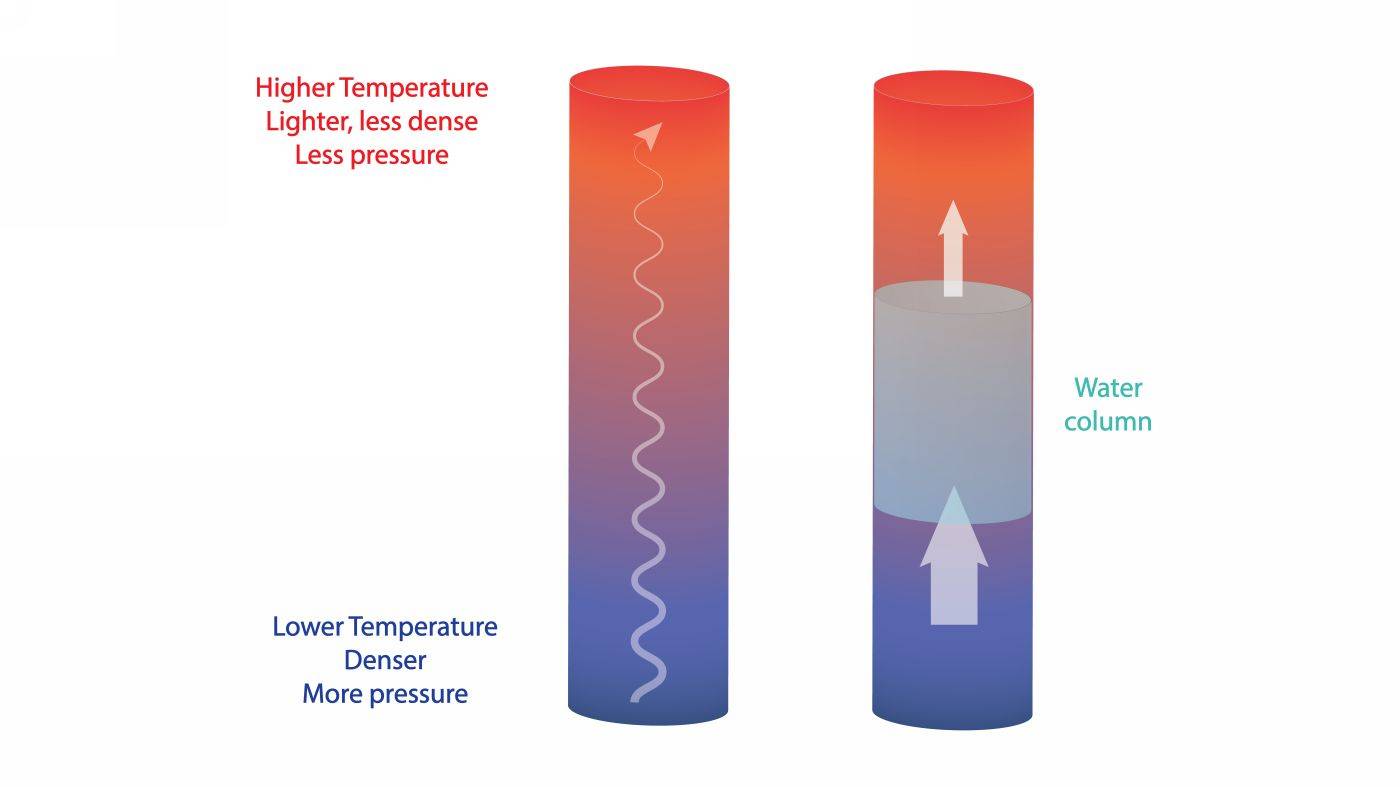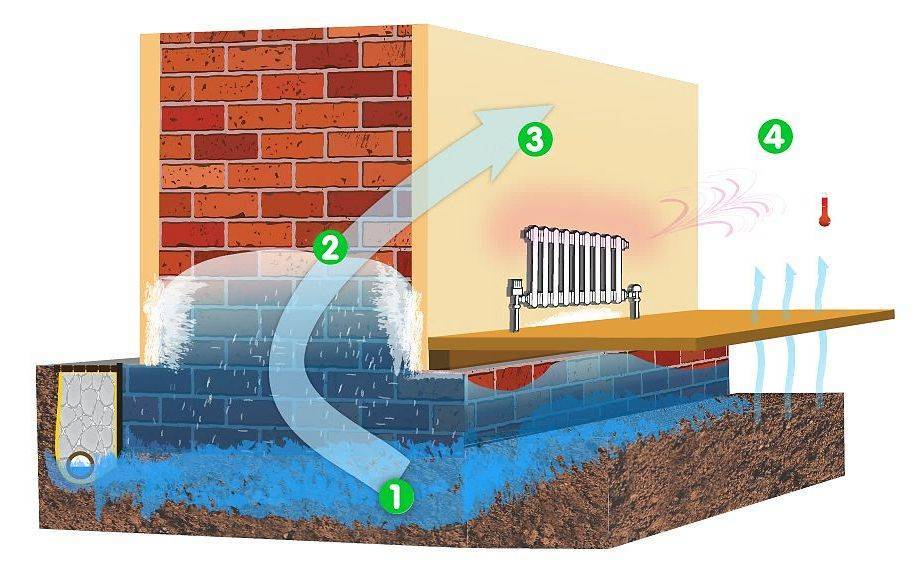The Effect of Heating
In addition to electrokinetic short-range forces, some external factors - such as temperature and pressure - also affect the movement of moisture inside capillaries.
The positive effect of slow, steady heating in old buildings is well known. Heating drives evaporation, which is the main dehydration mechanism of how old walls discharge moisture from the building fabric.
Why Heating Alone Can't Solve Rising Damp?
When a building is suffering from rising damp, heating has a secondary - not so positive - effect on old buildings. To understand this mechanism, let's look at how heating works, at some of the physical characteristics of warm and cold air.
- Warm air expands. it becomes lighter and thus it rises. Warm air becomes light, which translates to less pressure.
- Cold air contracts, it becomes heavier and denser, so it sinks. Dense air translates to more pressure.
So changes in temperature translate to changes in pressure.
The temperature of walls vary due to heating and the cooling effects from the environment, forming horizontal and vertical temperature gradients. Generally speaking, the base of the walls is cooler than the top, as well as the internal surface of the walls is warmer due to heating than its outer weather-facing surface.

Horizontal & vertical temperature gradients inside a wall
These vertical (top-bottom) and horizontal (inside-outside) temperature gradients create pressure gradients inside the capillaries - with more pressure at the cold bottom and less pressure at the warm top - resulting in a lifting or pumping effect inside the wall capillaries, pumping the moisture upwards inside the walls.

Temperature or pressure difference creates a pumping effect inside the capillaries
Normally, there is nothing wrong with this as this leads to evaporation and the dehydration of the wall fabric.
EXCEPT, when we have rising damp, the walls are connected to the water table with an UNLIMITED amount of moisture at the bottom. The walls CAN'T dry out by evaporation, as the water at the base of the walls never ends, hence the wetting of the wall fabric is going to be an ongoing, never-ending process.
With the water flow ground salts will also be drawn into the wall fabric. This will turn on additional mechanisms, leading to further "complications":
- Salt crystallization: due to evaporation, the mechanical expansion (5 - 10X) of salt crystals inside the capillaries causes mechanical damages, resulting long-term in the crumbling and flaking of the building fabric.
- Salt moisture retention: salts are able to bond moisture chemically - a property known as hygroscopicity (the ability to bond moisture). An increasing amount of salts in the fabric leads to increased wetting, especially between autumn to spring.
- Electrical phenomena: salty water inside wall capillaries is a good electrical conductor, behaving similar to a copper wire. As per the theory of electromagnetic induction, changing electromagnetic fields from the environment induce various voltages and current inside the capillaries, resulting in additional effects on the water.
As you can see, due to the presence of unlimited water supply at the base of the walls, the heat-driven lifting force actively DRIVES MORE MOISTURE UP the walls.

As long as walls stay connected to the water table (e.g.no DPC), the heating just draws more and more water up
Now, if walls are also suffering of other problems - such as water ingress, non-breathable plaster or render preventing evaporation etc. - fixing these "building defects" will result in an improvement of the situation, giving the false impression that rising damp has also been sorted. No, it hasn't. Rising damp continues silently in the background and will be creating problems (years) later.
The Missing Ingredient - And the Solution
The missing ingredient here is the damp proof course (DPC).
Once a DPC disconnects the wall capillaries from the water table, not letting more water into the wall fabric, heating and evaporation can slowly deal with the finite quantity of water in the walls, gradually resulting in a dry fabric. A working DPC also stops the rise of salts, preventing their further accumulation in the fabric, reducing crumbling.
To make heating work, the permanent capillary connection between the walls and the water table MUST be broken, which involves the installation of a damp proof course. Without a workable DPC, heating alone can not dry out the wall fabric, only the surface.
The Apparency of Heating as a Solution to Rising Damp
There is a hidden element here: the APPARENT workability of heating for rising damp. Often when people move into an old building they turn on the heating AND redecorate, replaster the walls in the same time. The redecoration itself HIDES the problem of salts and dampness for a few years, creating the impression that heating alone has worked and solved the problem of rising damp.
This is just a temporary solution, an apparency. Without a damp proof course, behind the fresh plaster the rise of water and salts continues. In a few years salts break down the plasters and the rising damp problem returns, costing more money to fix it.


